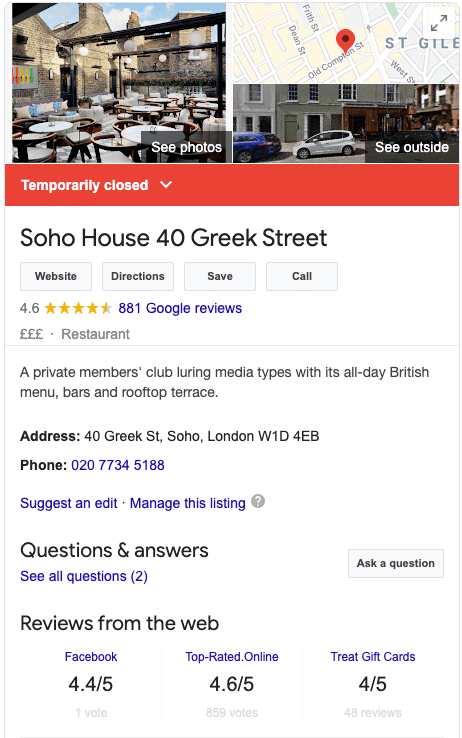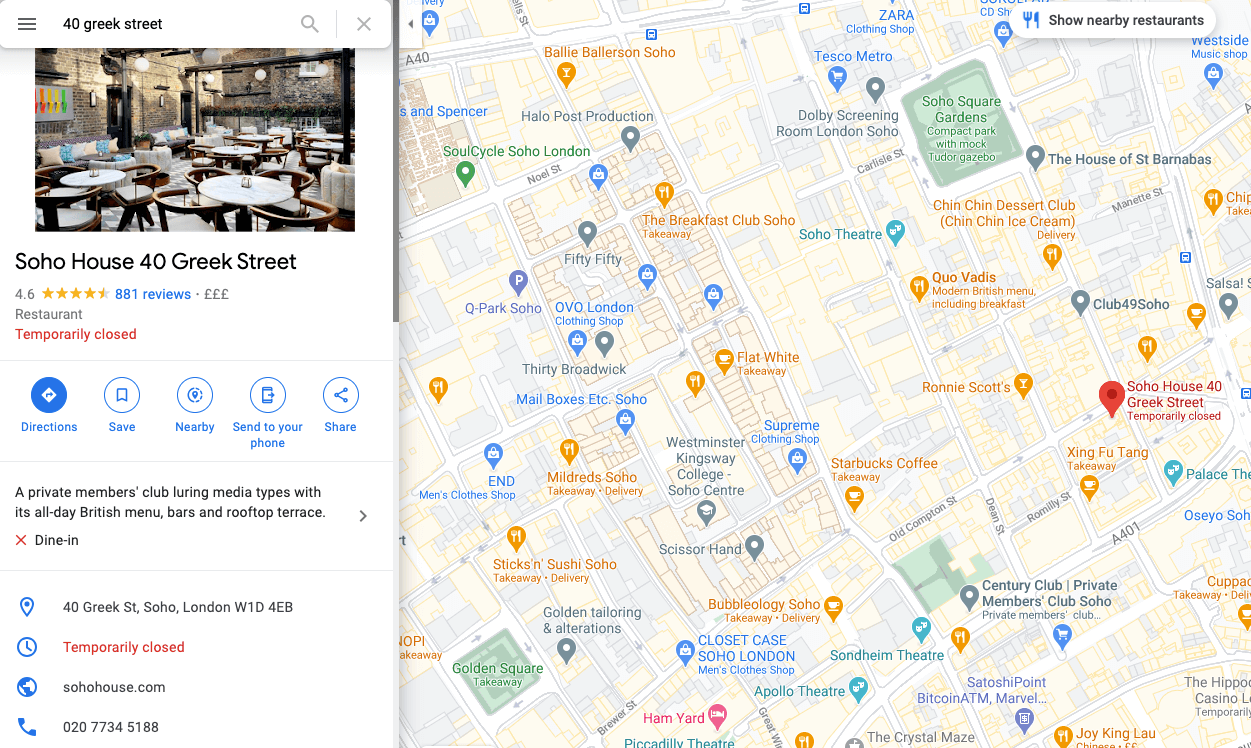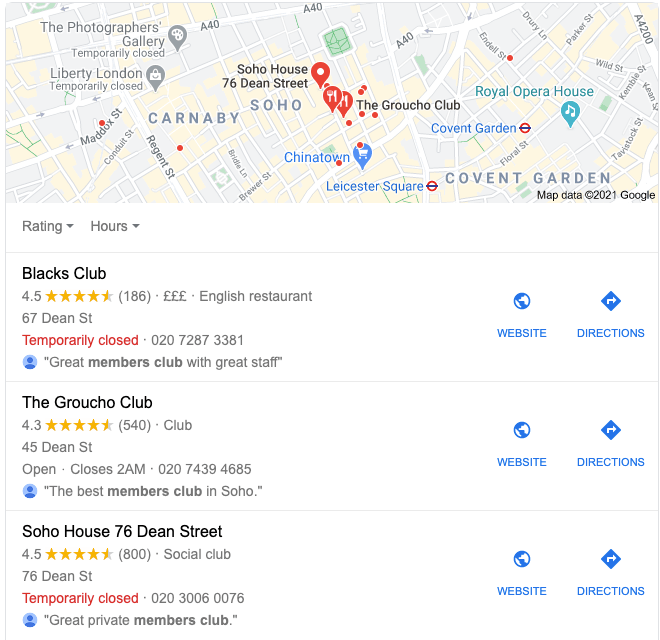Covid-19 has catapulted shopping local into the forefront again, “Searches for “available near me” have grown globally by more than 100% since last year.” according to SEJ article on Google Holiday Shopper Report.
Consumers have placed increasing importance on buying local over the course of the year. Which means if you own or manage a business that operates in a local area, if 2020 didn’t push local to the forefront of your marketing strategy, 2021 needs to be the year you change this.
What is local SEO?
“Local SEO refers to the process of ‘optimizing’ your online presence to attract more business from relevant local searches”. Ahrefs
Local SEO and what I’ll refer to in this article traditional SEO are closely related, perhaps you could say sisters. Only your business can decide who’s the big or little sister, but if you operate in a certain area, there’s no way you can picture your marketing house without them.
That’s because you need both to be successful in the local sphere, neglect traditional SEO and the reputation of your house isn’t as strong, therefore you’re likely to reach a ceiling with your local SEO results and vice versa.
Nurture both and you’ll be able to watch them grow together, but that’s enough of the family analogy. Hopefully you get my point that you also need to think about traditional SEO work such as technical (crawling and indexing), onsite (optimisation of content and html), off-site (high quality backlinks), content (high quality unique content).
What does it entail?
There are a number factors which can influence your local SEO performance, there are five arguable core factors:
1. Your Google My Business listing
2. Reviews
3. On-page optimisation
4. Links
5. Citations
Other elements such as behavioural and personalisation are factors however they don’t play as such a pivotal role, this year anyway!
Where should you begin?
Like almost every marketing activity you want to run an audit - this will help you understand where you are and where you want to be.
Your local SEO audit will cover the five core areas highlighted above and also include also important areas such as:
- Tracking high-value keywords on a local level
- Reviewing your Google Analytics account - is local data entering the account correctly (think UTM codes on your GMB listings).
- Conducting a local competitor analysis
- Auditing your five local SEO core pillars
The Five Core Local SEO Factors
- Google My Business
Your Google my business listing will power the Google Knowledge Panel, Google Local Pack and Google Maps, it’s seen a lot so you want this optimised.
Knowledge Graph

Map listings

Local Search Pack

Share Covid Updates
67% of consumers say they wouldn’t use a business if reviews said it didn’t have Covid-19 health and safety measures in place - Brightlocal consumer review 2020.
Google also released a bunch of new features to help businesses deal with the impact of Covid-19. They rolled out Covid-19 specific posts for business so you can quickly highlight any changes to customers. You can also highlight temporary closures, changes to regular services, safety precautions (screens to protect staff and customers?).
Now we’re still in our third lockdown these features are still important, if you’re closing then update your GMB profile.
Optimise your set up
Set up per industry varies so it’s worth doing your research to make the most of your listing. Make sure your NAP (name, address and phone number) is correct too. Easy you might say, but it’s interesting the amount of business that might have an outdated number or slightly different address.
Also make sure your primary GMB category is the one that most closely matches the most valuable search term you want to rank for, then add all of the additional categories that might relate to your business.
Create an optimised business description that includes important keywords and phrases. Basically you need to add as much detail as possible to your GMB listing.
Reviews & questions
Closely monitor and respond to reviews, positive reviews can have an impact on your visibility. GMB reviews also play a role in the local algorithm as keywords in reviews are highlighted for certain searches and can help you rank for those terms.
Customers can also leave questions on your GMB profile so make sure you monitor these. If someone asks a question, then answer it and answer it well. There’s also talk that answers from Q&As are likely to become part of voice search answers in the future.
Images
Upload great images! You can upload interior, exterior, product and team images so lots to choose from. Brightlocal found the importance of images in search results back in 2011, when 60% of consumers said that local search results with good images captured their attention.
Enable messages
Enable GMB messages if you have the resource. You’ll have to use the GMB app to have this feature but Moz has predicted in its 2021 local success report that Google will push harder on Google Messaging, so it’s something worth thinking about for this year.
Amplify your business
Hosting any virtual events? Share via GMB listing, you want your listing to be an extension of your business so treat it as such, sharing any good news or opportunities.
Add products
Google allows you to add your products to your listings - as we’ve highlighted adding as much detail to your GMB profile is beneficial. Trial adding these to a few locations - make sure you add UTM codes too so you can measure the performance.
Boost conversions
Not only can posts help to show customers you're there and ready for business, they should also be used to help boost conversions. Utilise posts to highlight company or product USPs.
Though please note Google is continually refining its tools and features – you’ll need to be proactive about updating your profile and making any needed changes when new developments are rolled out. However, don’t go overboard with GMB features, especially if you own a lot of listings.
Google is renowned for rolling back updates so don’t get disheartened if sometimes the hard work of your updates get rolled back, some updates are a risk but perhaps one worth taking. Constantly weigh up pros and cons and test test test. New feature? Try it out for a couple of listings, then roll out to all if you see positive results.
2. Reviews
Audit your existing reviews
Whether that’s on your GMB profile, social media profiles or review platform such as Trustpilot or Feefo. Speak with your sales team too.
Do you own a lot of branches? Review each brand individually, not just your business as a whole. If you’re going to spend time creating a review strategy you’ll want to know what common complaints might be and look to fix them before you roll out schemes to help get more reviews! Studies tend consumers are more likely to leave a negative review so don’t play into the hands of this.
Create your review strategy
How are you going to get these? One of the most effective ways is utilising email campaigns, so perhaps send a follow up email once a customer makes a purchase or visits you (if you have their details of course -this is easier for appointment based businesses where you have a record of the customer).
Leaflets or posters around your branch can also be a good way to target customers. However much it would be great to incentivise leaving reviews with contests and giveaways, we wouldn’t recommend it. It could lead to your reviews getting removed if for example Google catches wind of what you’re up to!
Respond to reviews - good and bad!
Respond to your reviews - good or bad! Google's guidelines actively encourage businesses to respond to reviews, so there is potential SEO benefit in it. Not only that but it shows your customers you value and appreciate their feedback, if the feedback is negative then look to take it on board and show the customer you do care.
Try not to use a generic thank you or sorry messages too, make these personal. The reviewer has spent time providing you with feedback, a personal approach back is great. We’ve all seen viral reviews where businesses have responded in less than professional ways to negative reviews, not what 2021 needs.
3. On-page Optimisations
Keyword research
How are people searching in your area? Use keyword tools like Google Keyword Planner, SEMrush or Ahrefs to understand how your users in each area are searching and what the most common searches are. Google’s autocomplete function in the search bar can also help you with this.
Like I mentioned earlier input these into your keyword tracking tool and monitor your performance on a local level alongside your competitors.
Optimise onsite copy
Use your keyword research document to help you start producing a content strategy for your site from a local standpoint. The strategy for optimising your onsite copy will vary depending on your business - particularly if you are dealing with one location vs multiple locations.
Do not simply use the same content from page to page and change the location-specific parts, this is extremely poor practice because where’s the value in this content. Think about Google’s E-A-T guidelines when you’re producing any new copy to benefit your local SEO efforts.
Mobile user experience
61% of mobile searchers are more likely to contact a local business if they have a mobile-friendly site. So if Google’s mobile first update didn’t make you think of putting mobile first, you need to when it comes to local searchers.
Test your website using a mobile on 4g. If you’re struggling so are your customers so make this a priority.
Multiple branch listings
For multiple locations, you want a contact page for each branch. If you’re a national brand with multiple locations your site will not be location specific - your branch pages are going to be where you optimise for the location.
This is also where you’ll link to for your GMB page, or when you’re citation building or local link building. Make sure you have your NAP and the embedded map on these branch pages too.
4. Links
Audit yours and your competitor backlinks
Start by reviewing your local competitors, remember these can vary greatly per location so try to do it location specific alongside auditing your own backlinks. You can use a site such as Ahrefs or Majestic to analyse where your competitors are against yourself.
A competitor backlink gap could also show you where your competitors are featured vs yourselves. For example, if they have a link on the Norfolk Chamber of Commerce what’s to say you can’t get one too?
Develop your strategy
Now we’re not going to lie and say link building is easy, it’s not. You’re going to put a fair amount of hard work into it, but if you partner with a local charity or have a piece of good business news there’s nothing to say it won’t be covered locally. So reach out to your local newspapers or local event pages, possibly invite local bloggers with their own domain to your online event.
Develop a strategy for your outreach over the year and try to strike up relationships with local websites.
Be persistent
Like we said link building/outreach work is not easy but be persistent, if someone doesn’t respond try a follow up email or perhaps a phone call. Persistencancy can pay off, trust me.
5. Citations
A less commonly known area of local SEO are citations. A local citation is any online mention of the name, address, and phone number of a local business.
Review your citation score
Review your citation score - Moz Local or Yell Connect Scan can help with this. You’ll get a score on how accurate your listings are on the main citation sites such as Yell, TouchLocal and Scoot, but this score is not the gospel. You will still need a bit of manual checking, however it can give a good indication of your citation health so worthwhile doing for all branches.
Create your hit list
Using the indication of what might be wrong create your citation hit list - there are a lot out there you can follow so you don’t need to manually create this as such. You’ll want to try and find some specific local ones and possibly industry specific ones though and not just focus on national citation sites.
Get your citations consistent
The importance of citations is hotly debated, Whitesparks recent report highlights this but if you're a new business or recently changed address it can’t be ignored. If you have some down time too, (not sure who I’m kidding here) it won’t harm to add more so always keep it on the radar.
So there you have it, you should now have the workings to create your 2021 local SEO strategy.
We recommend producing a spreadsheet of your findings and building out your strategy there. Looking to plan your activity by quarter can be helpful too.
This article focused on local SEO specifically but other elements you also shouldn’t forget about are:
- The Google Guarantee
- Google’s Local Services Ads
- Local Inventory Ads
Also remember to include this as part of your multi channel marketing strategy, no one should be working in silos in 2021.
